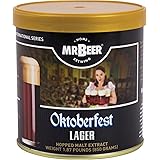The journey from raw ingredients to a perfectly poured pint of craft beer is an intricate dance of science, art, and passion. Many enthusiasts appreciate the complex flavors and aromas of a well-made brew, but few truly understand the meticulous steps involved in its creation. Below, we delve deeper into the fascinating world of commercial brewing, expanding on the detailed process showcased in the video from Evolution Craft Brewing Co. This comprehensive guide illuminates how a commitment to quality ingredients and precise techniques culminates in a premium product, offering insights into each critical stage of beer production.
The Foundation of Flavor: Essential Craft Beer Ingredients
Every exceptional beer begins with four fundamental ingredients: water, malted barley, hops, and yeast. These components, when carefully selected and expertly combined, dictate the final character of the brew. Evolution Craft Brewing Co. prioritizes quality, sourcing the finest ingredients to ensure a consistent and superior product for their customers. Understanding the role of each element is key to appreciating the craft.
The Purity of Water
Water is often overlooked but constitutes over 90% of beer’s volume, making its quality paramount. Evolution Craft Brewing Co. is uniquely fortunate to possess its own well on the property, a legacy from its past as an ice production facility. This dedicated well supplies pristine, unfiltered, and untreated water directly for beer making. The absence of additives or stripping processes ensures the water’s natural mineral profile remains intact, providing an ideal canvas for brewing. Different water profiles can accentuate hop bitterness, malt sweetness, or yeast character, underscoring the importance of this foundational element.
Malted Barley: The Soul of Beer
Malted barley provides the fermentable sugars, body, and color that define beer. Evolution sources its quality malted barley from the Canadian area, known for its excellent grain. Before brewing can begin, this barley must undergo milling. This crucial first step involves running the grain through a mill to carefully cut the husks away from the kernels without pulverizing the grain into flour. The goal is to expose the starchy interior while keeping the husk largely intact, which will later serve as a natural filter bed during the lautering process. An efficient mill ensures optimal sugar extraction.
Hops: Bitterness, Aroma, and Flavor
Hops are the spice of beer, contributing bitterness, aroma, and flavor that balance the sweetness of the malt. Evolution Craft Brewing Co. utilizes a blend of American-style hops from the Pacific Northwest and European hop varieties to achieve diverse profiles. The timing of hop additions during the boil is critical: early additions contribute to a beer’s bittering characteristics, crucial for styles like IPAs. Mid-boil additions can impart earthy or grassy tones, while late-boil additions or dry-hopping are primarily for flavor and intense aromatics. This strategic layering allows brewers to craft complex and nuanced hop expressions.
Yeast: The Fermentation Catalyst
Yeast is the magical microorganism responsible for fermentation, transforming sugars into alcohol and carbon dioxide. While not detailed in the video, different yeast strains contribute distinct flavor profiles, from fruity esters to spicy phenols. Evolution Craft Brewing Co. carefully selects yeast strains appropriate for each beer style, recognizing its pivotal role in developing the final taste and aroma. Without healthy yeast, there is no beer; only sweet wort remains.
The Brew House: Where Transformation Begins
Once the ingredients are ready, the journey through the brew house begins, involving a series of precise steps to extract sugars and prepare the liquid for fermentation. This intricate process requires careful temperature control and keen attention to detail, ensuring the quality product Evolution Craft Brewing Co. aims for.
Mashing: Converting Starches to Sugars
The milled malted barley is conveyed via an auger system to a batch hopper, where it’s precisely weighed according to the recipe. From there, it moves into the mash mixer, the first vessel in the brew house. Hot water is added to the milled malt, creating a warm, thick mixture similar to oatmeal, known as the “mash.” This process allows the hot water to penetrate the barley kernels, activating enzymes that convert starches into fermentable sugars. The mash also extracts color, flavor, and some starches, laying the groundwork for the beer’s profile.
Lautering: Clarifying the Wort
After mashing, the entire liquid and solid mixture is transferred to the lauter tun, the fourth vessel in the brew house setup. The lauter tun features a false bottom, a perforated plate that separates the liquid from the spent grain. Initially, the sugar-rich liquid, now called “wort,” is recirculated from the bottom back over the top of the grain bed. This repetitive process gradually builds a natural filter bed from the husks and solids at the bottom of the lauter tun. This grain bed efficiently filters out any remaining husks or milling solids, resulting in a clear, sweet, and flavorful wort. The purity of this liquid is essential for the next stages.
The Boil and Hop Additions
The clarified wort is then transferred to the kettle, where it undergoes a vigorous boil. This step serves several critical functions: it sterilizes the wort, halts enzymatic activity, helps to concentrate the sugars, and facilitates the crucial hop additions. As mentioned earlier, hops are added at different stages of the boil to achieve specific bittering, flavor, and aromatic contributions. Towards the end of the boil, the entire wort mixture is sent through a whirlpool process. This creates a centrifugal force that gathers hop particulates and any remaining solids into a cone at the center of the kettle, allowing them to be easily discarded. The clean wort is then ready for cooling and fermentation.
Fermentation and Conditioning: The Essence of Beer
Following the boil and whirlpool, the hot wort passes through a heat exchanger to rapidly cool it to the optimal fermentation temperature, which at Evolution Craft Brewing Co. is between 68 and 70 degrees Fahrenheit. This temperature control is vital to prevent off-flavors and ensure healthy yeast activity. The cooled wort is then transferred to fermenters, marking the start of a transformative stage.
The Magic of Yeast
Upon reaching the fermenters, yeast is introduced to the wort, initiating fermentation almost instantly. During this primary fermentation, the yeast consumes the sugars in the wort, producing alcohol and carbon dioxide (CO2) as byproducts. The alcohol remains suspended in the liquid, while the CO2 typically vents out, sometimes creating a visible “airlock” effect. This primary fermentation period usually lasts between five and ten days, during which the yeast vigorously converts sugars and shapes the beer’s character.
Conditioning and Sustainability
After primary fermentation, the beer enters a conditioning phase, typically lasting another four to five days. During this time, the yeast begins to “clean up” the beer, reabsorbing some byproducts and maturing the flavors. Evolution Craft Brewing Co. demonstrates a commitment to sustainability by repurposing its brewing byproducts. Any excess yeast, along with the spent grain from the mashing process, is given to a local dairy farmer to feed his livestock. This symbiotic relationship not only reduces waste but also supports the local agricultural community, creating a beneficial circular economy where “dairy product back, whether it be in milk form or E form, to use in the public house restaurant.”
Finishing Touches and Packaging Excellence
Once conditioned, the product is officially considered beer, though at this stage, it is still flat. The final steps involve clarifying, carbonating, and packaging the beer to prepare it for market, ensuring it reaches consumers in perfect condition.
Clarification and Carbonation
The uncarbonated beer is transferred into bright tanks, large pan-bottom tanks. Before packaging, it passes through a high-tech centrifuge. This advanced equipment efficiently pulls out any remaining solids or yeast particulates from the liquid, resulting in a remarkably consistent and uniform product with exceptional clarity. Once in the bright tank, the beer undergoes forced carbonation using a carbonation stone, infusing it with the desired level of fizziness and sparkle that consumers expect from a refreshing beer.
Packaging for the Market
Evolution Craft Brewing Co. offers two primary packaging options: draft and bottles. For draft products, beer is directly transferred from the bright tanks through lines to clean and sanitized kegs, filled efficiently from the top tap. Bottling, however, is a more intricate process, reflecting the brewery’s commitment to quality and presentation.
The bottle packaging line is a spectacle of automation and precision:
- Depalletizer: Skids arrive with 2250 brown bottles each, which are then depalletized and fed onto the line. Brown glass is preferred to protect the beer from light and maintain its flavor integrity, and the brewery appreciates that it “doesn’t contribute any additional flavor characteristics.”
- Cleaning and Filling: Each bottle is inverted, sprayed with a sanitizing solution, and allowed to gravity dry. It then moves to a three-head filler. This sophisticated machine first evacuates any oxygen from the bottle, preventing oxidation which can lead to stale flavors. It then fills the bottle with beer.
- Crowning and Foaming: A small amount of foam is intentionally left at the top of the bottle, which helps to “push out any residual oxygen” before the bottle is crowned. This ensures minimal oxygen exposure and maintains freshness.
- Labeling and Packing: Bottles pass through a shower to sanitize the exterior, then a drying device, before entering the labeler. A single label is applied to the body of each bottle. Finally, the bottles are fed into a drop packer. This ingenious machine organizes bottles into four lanes, six bottles deep, then gently lowers them into boxes. Each box contains 24 twelve-ounce bottles, fully labeled and crowned.
From the packaging line, which can process an impressive 250 to 270 cases every hour (roughly equivalent to 30 kegs per hour), the sealed cases pass through a case sealer. Employees then move the finished product from the outgoing conveyor to begin the palletization process, ready for cold storage and distribution. This meticulous end-to-end brewing process, from selecting the finest ingredients to efficient, quality-controlled packaging, highlights Evolution Craft Brewing Co.’s dedication to producing a superior product for its patrons.











